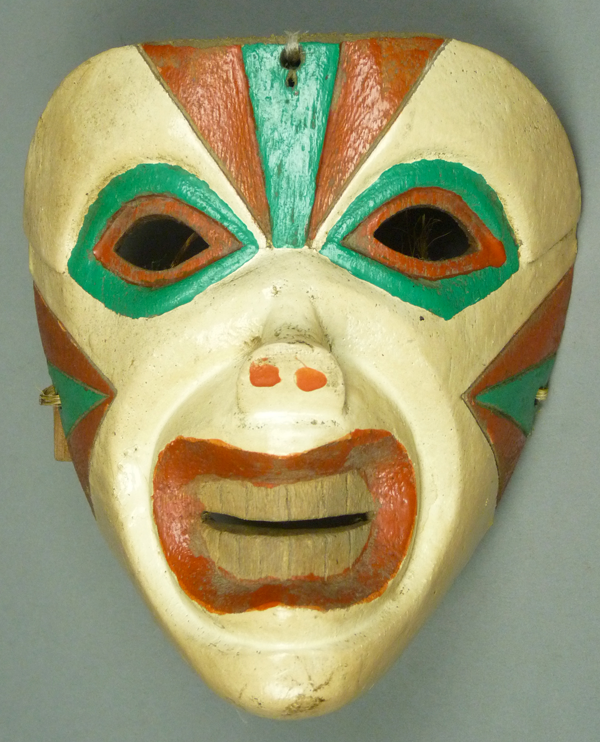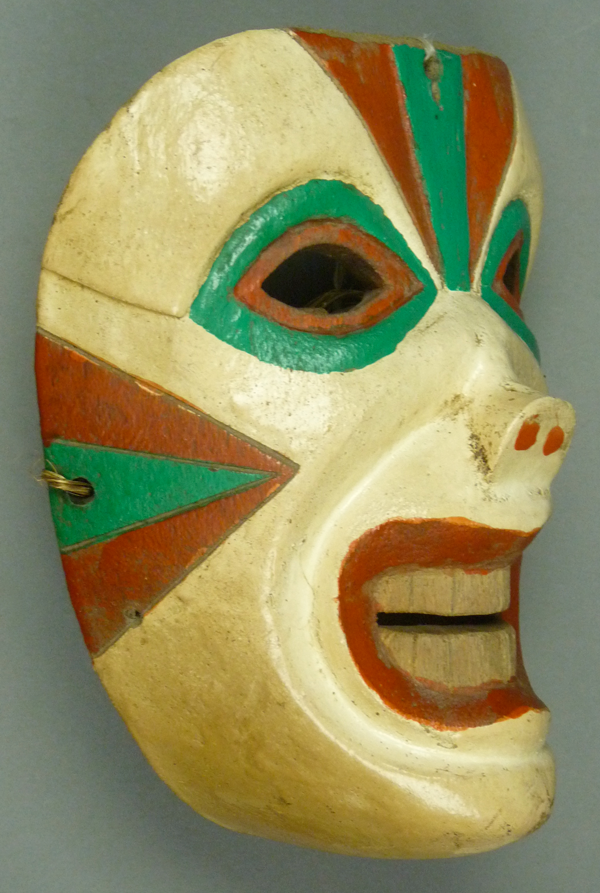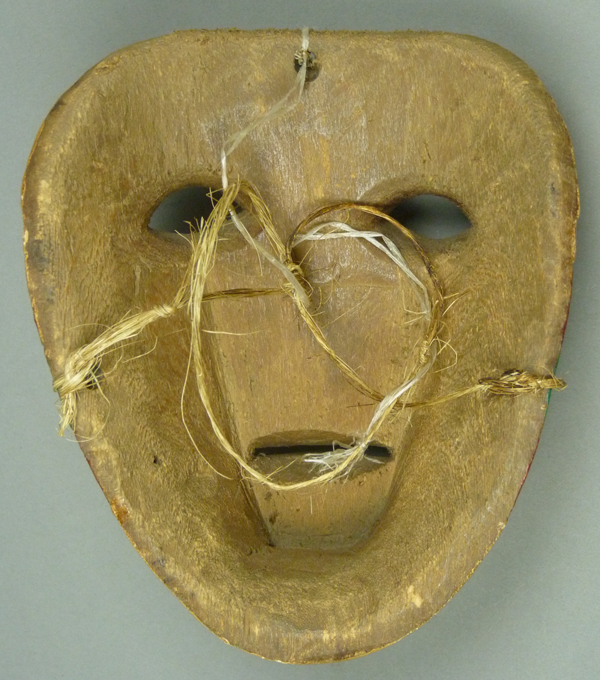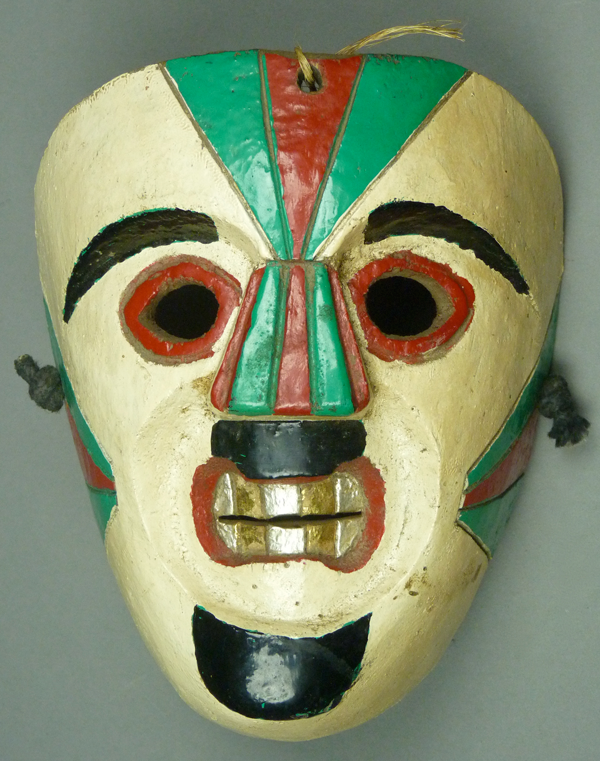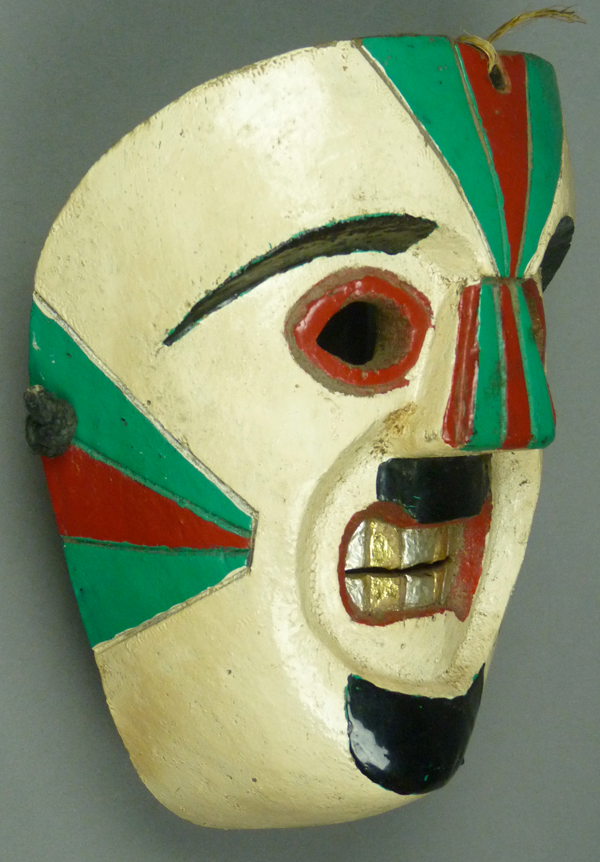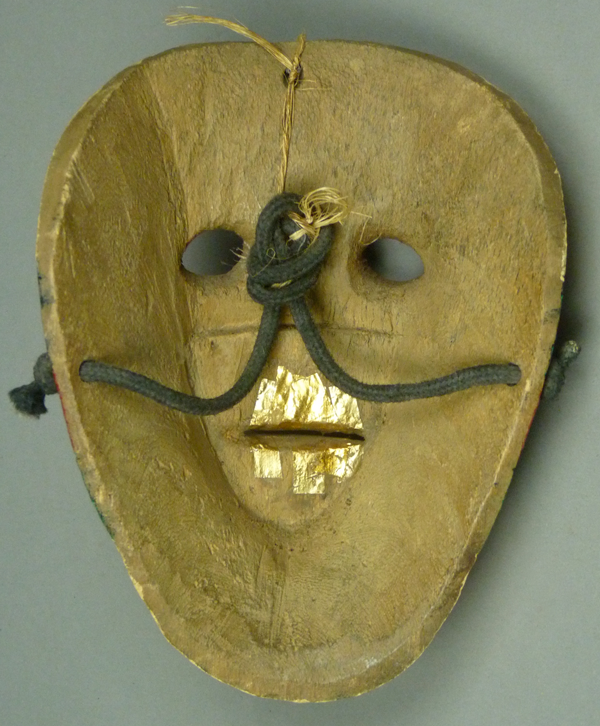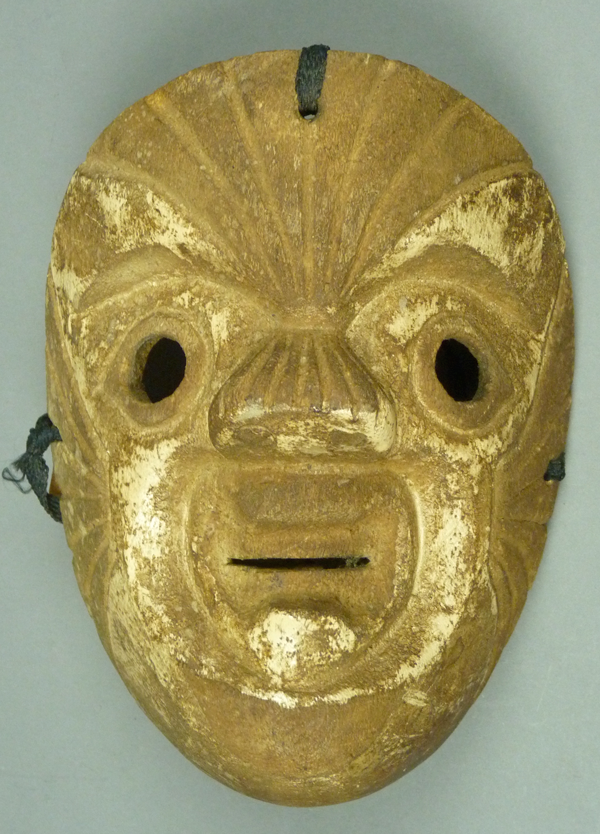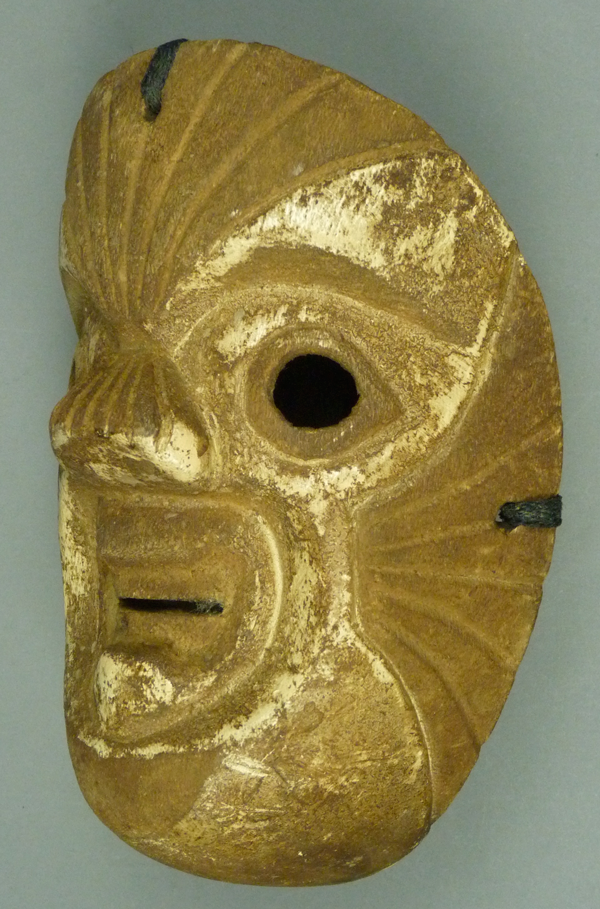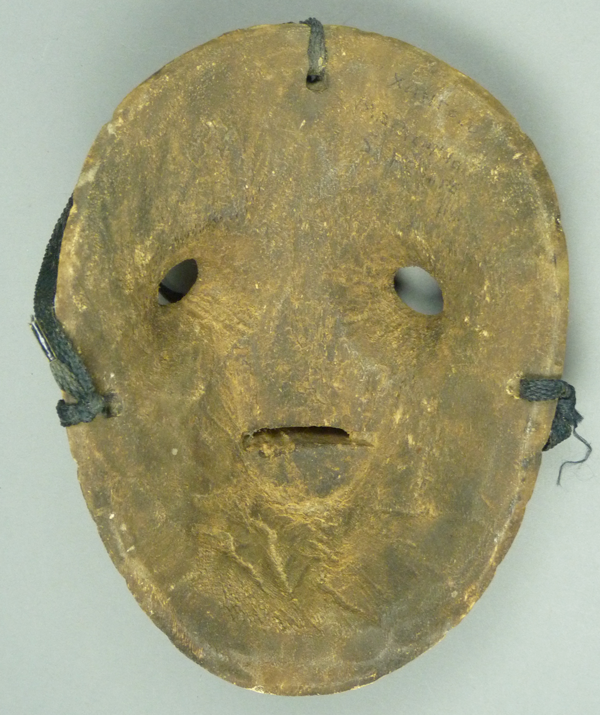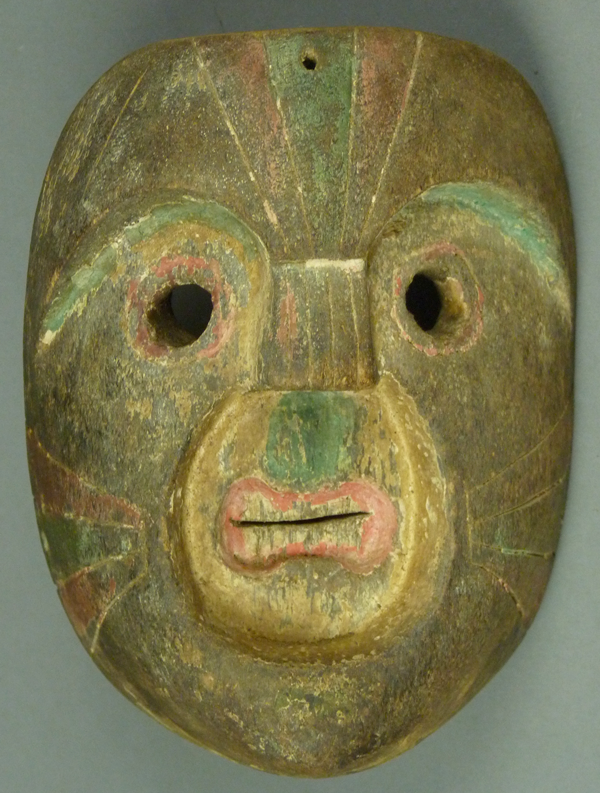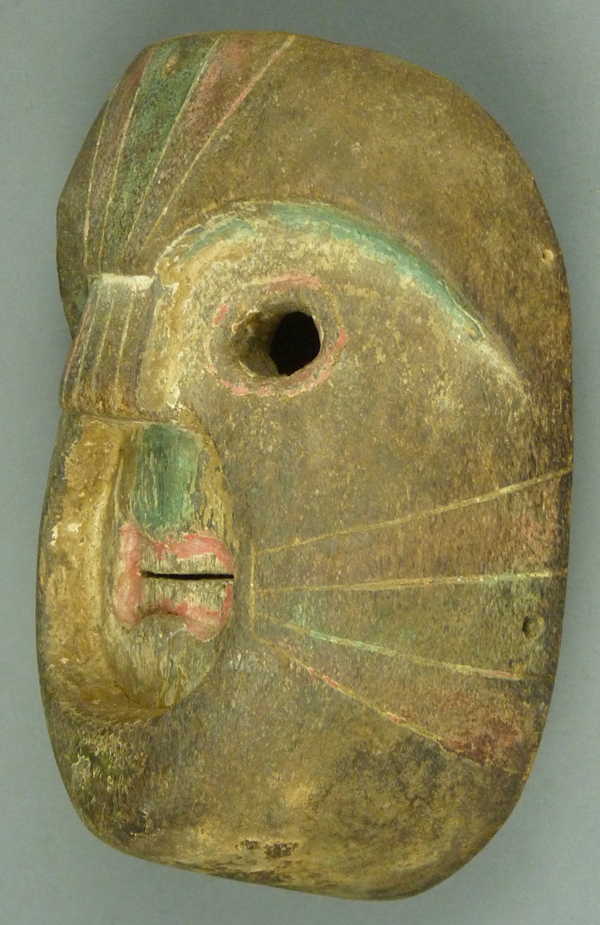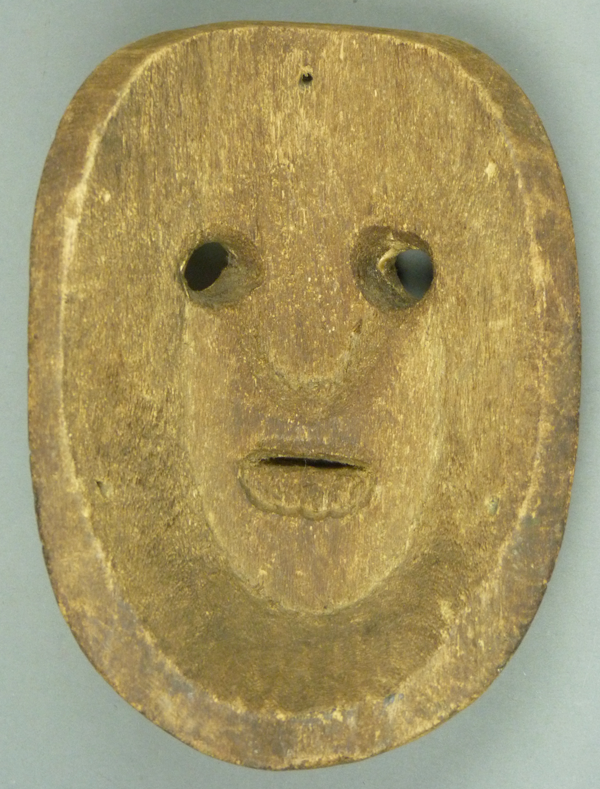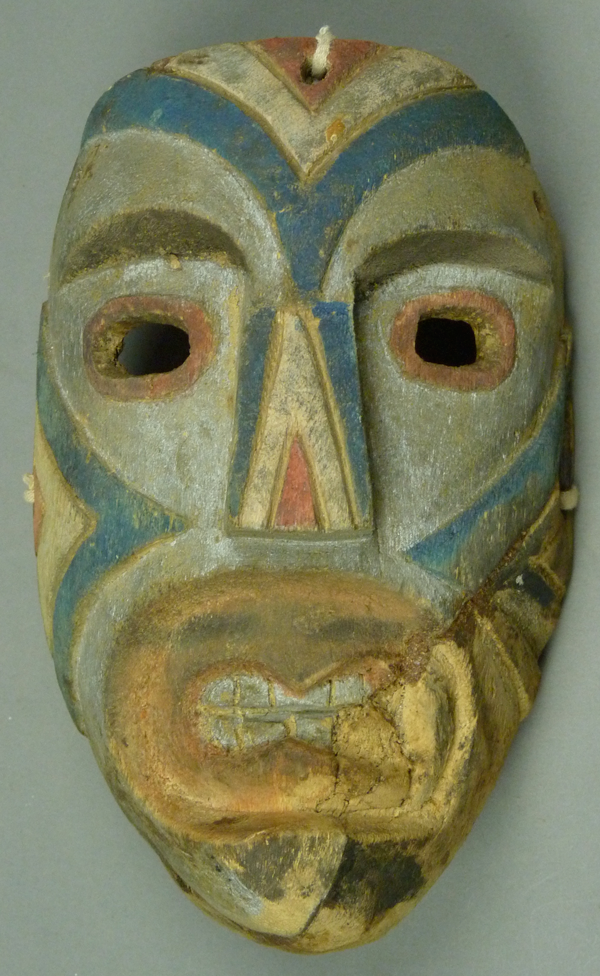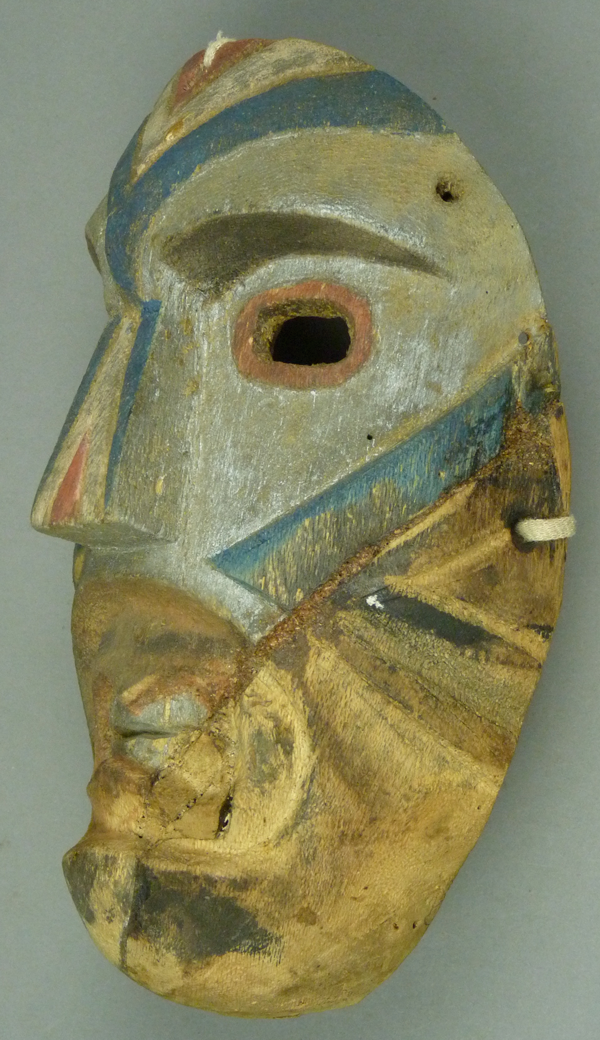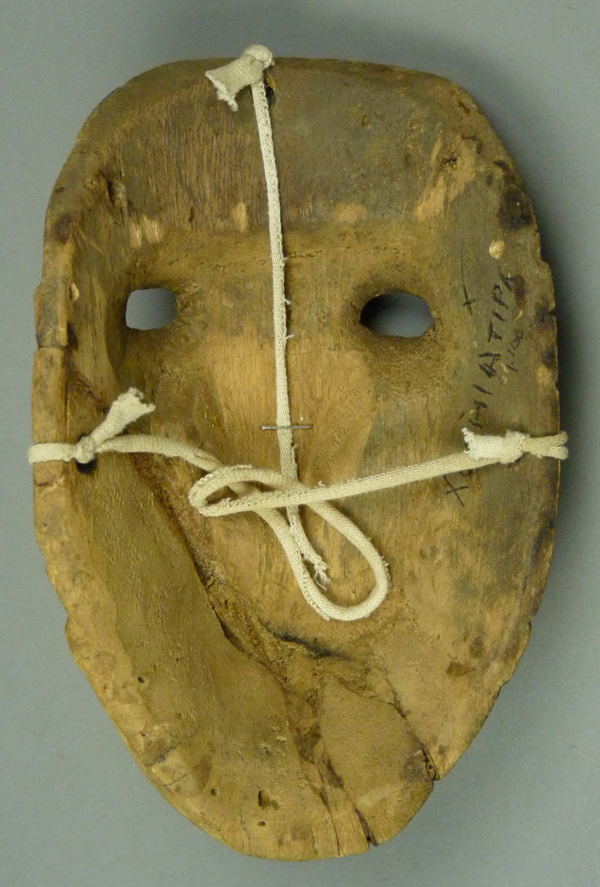In their book Máscaras (1981, pages 86 and 87), Jaled Muyaes and Estela Ogazón wrote of the masks worn in the Danza de los Xantolos—”The masks are of two different types. The so-called primitive masks are characterized by painted features, geometric incisions representing wrinkles and an open mouth displaying teeth and gums. The more elaborate masks are characterized by their anthropomorphic realism and fine workmanship. They are small, disproportionate, some painted and others left unpainted.” Those authors included a photo of one of the geometric masks (Plate 17). Last week’s post featured masks from the “more elaborate” category, while today’s discussion will focus on the “primitive” or geometric masks. There is actually a third category, masks with novel designs, some of which would be described as primitive after all, and probably a fourth that consists of masks borrowed from other dances. Here is one of those geometric masks.
I purchased this Viejo mask and the next from Dinah Gaston in 2002. It is from Huehuetla, Hidalgo.
This mask is 6¼ inches tall, 5¼ inches wide, and 2½ inches deep. Notice the relief-carved edge, lateral to the eye; it creates a stereotyped image of a flap of some material.
There is a pattern of differential staining.
Xipe Totec was an ancient Mexican god who was worshiped by the Aztecs and many other Indians. Aztec priests impersonated this god by wearing the flayed skin of a sacrificial victim over their own skin. Because these “geometric” masks have a mouth surrounded by another mouth-shaped opening, it occurred to me that they might represent the face of Xipe Totec, a face wearing the skin of another face. I mentioned this idea to Jaled Muyaes during one of my visits, and Jaled replied that he had thought the same thing. Therefor I will stop referring to these masks as primitive or geometric; instead I will call them Xipe style Xantolo masks. The mouth of the next mask is particularly illustrative of this double layered mouth. The “goggle” eyes also contribute to this imagery, as did the flap on the previous mask.
Xipe Totec was formally considered to be a god of planting, so he was celebrated in the spring. The double skin imagery meant that Xipe could shed his old outer layer in order to spring forth as something new, just as a seed sheds its outer husk and then germinates to produce a new plant, particularly corn. Therefor one can imagine that Xipe was also associated with the time of harvest, the other end of this cycle of death and rebirth. The Todos Santos or Xantolo celebration represents a condensation of such indigenous ceremonies as those about returning souls and others about the harvest onto the Roman Catholic dates for All Saints and All Souls days, November 1 and 2 respectively.
The second mask in our line-up closely resembles the first, but the double mouth is more explicitly defined.
This mask came without a record of the town where it was made, but it must have come from the vicinity of Huehuetla, Hidalgo.
This mask is 7½ inches tall, 5½ inches wide, and 3 inches deep. The teeth are covered with foil from cigarette packages.
This mask has only mild staining from use.
Here is a link to a dance photo of a m/l identical mask.
http://www.milenio.com/hidalgo/Rituales-tradicion-Huasteca-Jaltocan_0_182982213.html
The third mask has essentially the same form, but the paint is so worn that the former colors are no longer apparent. Look at this double mouth. Also consider this flat floppy nose, another pointer to the concept of a face of loose skin being worn over an intact face. If this was indeed the purpose of this design, as Jaled Muyaes and I would propose, this must have become codified and stereotyped long ago.
I got this mask from Jaled Muyaes and Estela Ogazón in 11/2/01. It is from Huejutla.
This mask is 8 inches tall, 5¼ inches wide, and 2½ inches deep.
This mask is clearly old and worn, as is the next.
I got this mask from Jaled Muyaes and Estela Ogazón in 1997. In this case the mouth is depicted as being at the bottom of a tube that is nearly ½ inch deep.
This mask is 7 inches tall, 5 inches wide, and 2½ inches deep.
This is an old back.
The last mask in this series presents us with several variations. There is a beak-like mouth within the larger oval opening along with another rectangular nose. Long ago this mask was broken (look at the left side of the chin) and then repaired, but the repaired area was never painted. Probably the craftsman who did the repair did not have the required colors.
I bought this mask from Jaled Muyaes and Estela Ogazón in 1999. It was from Xochiatipa, Higalgo.
Here is the patch; it would look pretty good with the benefit of paint. This mask is 7½ inches tall, 4¾ inches wide, and 2¾ inches deep.
The back of the patch was not as carefully carved. There is an obvious contrast between the wear on the back of the original part and the undanced surface of the area of repair.
Next week I will show more of the Xipe style Xantolo masks.

